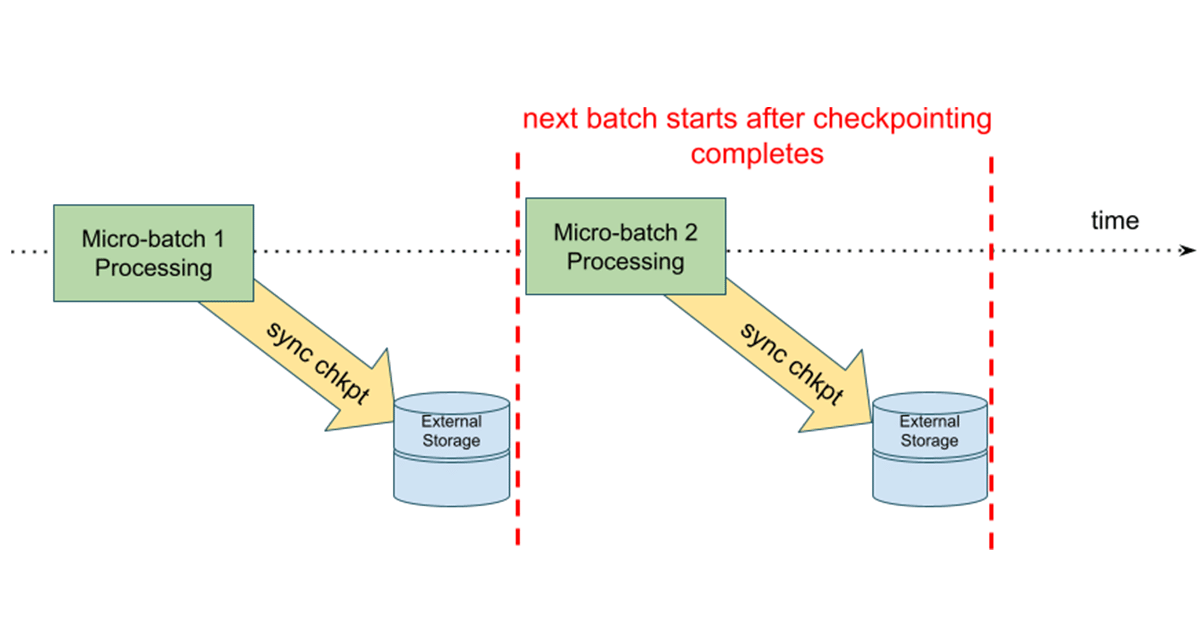文章目录
我们可以在初始化 SparkSession 的时候进行一些设置:
import org.apache.spark.sql.SparkSession
val spark: SparkSession = SparkSession.builder
.master("local[*]")
.appName("My Spark Application")
.config("spark.sql.warehouse.dir", "c:/Temp") (1)
.getOrCreate
Sets spark.sql.warehouse.dir for the Spark SQL session
也可以使用 SQL SET 命令进行设置:
scala> spark.conf.getOption("spark.sql.hive.metastore.version")
res1: Option[String] = None
scala> spark.sql("SET spark.sql.hive.metastore.version=2.3.2").show(truncate = false)
+--------------------------------+-----+
|key |value|
+--------------------------------+-----+
|spark.sql.hive.metastore.version|2.3.2|
+--------------------------------+-----+
scala> spark.conf.get("spark.sql.hive.metastore.version")
res2: String = 2.3.2
其他方式的设置可以参见 Spark三种属性配置方式详细说明。下面是 Spark SQL 支持的参数列表。
spark.sql.adaptive.enabled
Enables adaptive query execution
Default: false
Use SQLConf.adaptiveExecutionEnabled method to access the current value.
spark.sql.adaptive.minNumPostShufflePartitions
(internal) The advisory minimal number of post-shuffle partitions for ExchangeCoordinator.
Default: -1
This setting is used in Spark SQL tests to have enough parallelism to expose issues that will not be exposed with a single partition. Only positive values are used.
Use SQLConf.minNumPostShufflePartitions method to access the current value.
spark.sql.adaptive.shuffle.targetPostShuffleInputSize
Recommended size of the input data of a post-shuffle partition (in bytes)
Default: 64 * 1024 * 1024 bytes
Use SQLConf.targetPostShuffleInputSize method to access the current value.
spark.sql.allowMultipleContexts
Controls whether creating multiple SQLContexts/HiveContexts is allowed (true) or not (false)
Default: true
spark.sql.autoBroadcastJoinThreshold
Maximum size (in bytes) for a table that will be broadcast to all worker nodes when performing a join.
Default: 10L * 1024 * 1024 (10M)
If the size of the statistics of the logical plan of a table is at most the setting, the DataFrame is broadcast for join.
Negative values or 0 disable broadcasting.
Use SQLConf.autoBroadcastJoinThreshold method to access the current value.
spark.sql.avro.compression.codec
The compression codec to use when writing Avro data to disk
Default: snappy
The supported codecs are:
Use SQLConf.avroCompressionCodec method to access the current value.
spark.sql.broadcastTimeout
Timeout in seconds for the broadcast wait time in broadcast joins.
Default: 5 * 60
When negative, it is assumed infinite (i.e. Duration.Inf)
Use SQLConf.broadcastTimeout method to access the current value.
spark.sql.caseSensitive
(internal) Controls whether the query analyzer should be case sensitive (true) or not (false).
Default: false
It is highly discouraged to turn on case sensitive mode.
Use SQLConf.caseSensitiveAnalysis method to access the current value.
spark.sql.cbo.enabled
Enables cost-based optimization (CBO) for estimation of plan statistics when true.
Default: false
Use SQLConf.cboEnabled method to access the current value.
spark.sql.cbo.joinReorder.enabled
Enables join reorder for cost-based optimization (CBO).
Default: false
Use SQLConf.joinReorderEnabled method to access the current value.
spark.sql.cbo.starSchemaDetection
Enables join reordering based on star schema detection for cost-based optimization (CBO) in ReorderJoin logical plan optimization.
Default: false
Use SQLConf.starSchemaDetection method to access the current value.
spark.sql.codegen.comments
Controls whether CodegenContext should register comments (true) or not (false).
Default: false
spark.sql.codegen.factoryMode
(internal) Determines the codegen generator fallback behavior
Default: FALLBACK
Acceptable values:
CODEGEN_ONLY - disable fallback modeFALLBACK - try codegen first and, if any compile error happens, fallback to interpreted modeNO_CODEGEN - skips codegen and always uses interpreted pathUsed when CodeGeneratorWithInterpretedFallback is requested to createObject (when UnsafeProjection is requested to create an UnsafeProjection for Catalyst expressions)
spark.sql.codegen.fallback
(internal) Whether the whole stage codegen could be temporary disabled for the part of a query that has failed to compile generated code (true) or not (false).
Default: true
Use SQLConf.wholeStageFallback method to access the current value.
spark.sql.codegen.hugeMethodLimit
(internal) The maximum bytecode size of a single compiled Java function generated by whole-stage codegen.
Default: 65535
The default value 65535 is the largest bytecode size possible for a valid Java method. When running on HotSpot, it may be preferable to set the value to 8000 (which is the value of HugeMethodLimit in the OpenJDK JVM settings)
Use SQLConf.hugeMethodLimit method to access the current value.
spark.sql.codegen.useIdInClassName
(internal) Controls whether to embed the (whole-stage) codegen stage ID into the class name of the generated class as a suffix (true) or not (false)
Default: true
Use SQLConf.wholeStageUseIdInClassName method to access the current value.
spark.sql.codegen.maxFields
(internal) Maximum number of output fields (including nested fields) that whole-stage codegen supports. Going above the number deactivates whole-stage codegen.
Default: 100
Use SQLConf.wholeStageMaxNumFields method to access the current value.
spark.sql.codegen.splitConsumeFuncByOperator
(internal) Controls whether whole stage codegen puts the logic of consuming rows of each physical operator into individual methods, instead of a single big method. This can be used to avoid oversized function that can miss the opportunity of JIT optimization.
Default: true
Use SQLConf.wholeStageSplitConsumeFuncByOperator method to access the current value.
spark.sql.codegen.wholeStage
(internal) Whether the whole stage (of multiple physical operators) will be compiled into a single Java method (true) or not (false).
Default: true
Use SQLConf.wholeStageEnabled method to access the current value.
spark.sql.columnVector.offheap.enabled
(internal) Enables OffHeapColumnVector in ColumnarBatch (true) or not (false). When false, OnHeapColumnVector is used instead.
Default: false
Use SQLConf.offHeapColumnVectorEnabled method to access the current value.
spark.sql.columnNameOfCorruptRecord
spark.sql.constraintPropagation.enabled
(internal) When true, the query optimizer will infer and propagate data constraints in the query plan to optimize them. Constraint propagation can sometimes be computationally expensive for certain kinds of query plans (such as those with a large number of predicates and aliases) which might negatively impact overall runtime.
Default: true
Use SQLConf.constraintPropagationEnabled method to access the current value.
spark.sql.defaultSizeInBytes
(internal) Estimated size of a table or relation used in query planning
Default: Java’s Long.MaxValue
Set to Java’s Long.MaxValue which is larger than spark.sql.autoBroadcastJoinThreshold to be more conservative. That is to say by default the optimizer will not choose to broadcast a table unless it knows for sure that the table size is small enough.
Used by the planner to decide when it is safe to broadcast a relation. By default, the system will assume that tables are too large to broadcast.
Use SQLConf.defaultSizeInBytes method to access the current value.
spark.sql.dialect
spark.sql.exchange.reuse
(internal) When enabled (i.e. true), the Spark planner will find duplicated exchanges and subqueries and re-use them.
Default: true
Note
When disabled (i.e. false), ReuseSubquery and ReuseExchange physical optimizations (that the Spark planner uses for physical query plan optimization) do nothing.
Use SQLConf.exchangeReuseEnabled method to access the current value.
spark.sql.execution.useObjectHashAggregateExec
Enables ObjectHashAggregateExec when Aggregation execution planning strategy is executed.
Default: true
Use SQLConf.useObjectHashAggregation method to access the current value.
spark.sql.files.ignoreCorruptFiles
Controls whether to ignore corrupt files (true) or not (false). If true, the Spark jobs will continue to run when encountering corrupted files and the contents that have been read will still be returned.
Default: false
Use SQLConf.ignoreCorruptFiles method to access the current value.
spark.sql.files.ignoreMissingFiles
Controls whether to ignore missing files (true) or not (false). If true, the Spark jobs will continue to run when encountering missing files and the contents that have been read will still be returned.
Default: false
Use SQLConf.ignoreMissingFiles method to access the current value.
spark.sql.files.maxPartitionBytes
The maximum number of bytes to pack into a single partition when reading files.
Default: 128 * 1024 * 1024 (which corresponds to parquet.block.size)
Use SQLConf.filesMaxPartitionBytes method to access the current value.
spark.sql.files.openCostInBytes
(internal) The estimated cost to open a file, measured by the number of bytes could be scanned at the same time (to include multiple files into a partition).
Default: 4 * 1024 * 1024
It’s better to over estimate it, then the partitions with small files will be faster than partitions with bigger files (which is scheduled first).
Use SQLConf.filesOpenCostInBytes method to access the current value.
spark.sql.files.maxRecordsPerFile
Maximum number of records to write out to a single file. If this value is 0 or negative, there is no limit.
Default: 0
Use SQLConf.maxRecordsPerFile method to access the current value.
spark.sql.inMemoryColumnarStorage.batchSize
(internal) Controls…FIXME
Default: 10000
Use SQLConf.columnBatchSize method to access the current value.
spark.sql.inMemoryColumnarStorage.compressed
(internal) Controls…FIXME
Default: true
Use SQLConf.useCompression method to access the current value.
spark.sql.inMemoryColumnarStorage.enableVectorizedReader
Enables vectorized reader for columnar caching.
Default: true
Use SQLConf.cacheVectorizedReaderEnabled method to access the current value.
spark.sql.inMemoryColumnarStorage.partitionPruning
(internal) Enables partition pruning for in-memory columnar tables
Default: true
Use SQLConf.inMemoryPartitionPruning method to access the current value.
spark.sql.join.preferSortMergeJoin
(internal) Controls whether JoinSelection execution planning strategy prefers sort merge join over shuffled hash join.
Default: true
Use SQLConf.preferSortMergeJoin method to access the current value.
spark.sql.legacy.rdd.applyConf
(internal) Enables propagation of SQL configurations when executing operations on the RDD that represents a structured query. This is the (buggy) behavior up to 2.4.4.
Default: true
This is for cases not tracked by SQL execution, when a Dataset is converted to an RDD either using rdd operation or QueryExecution, and then the returned RDD is used to invoke actions on it.
This config is deprecated and will be removed in 3.0.0.
spark.sql.legacy.replaceDatabricksSparkAvro.enabled
Enables resolving (mapping) the data source provider com.databricks.spark.avro to the built-in (but external) Avro data source module for backward compatibility.
Default: true
Use SQLConf.replaceDatabricksSparkAvroEnabled method to access the current value.
spark.sql.limit.scaleUpFactor
(internal) Minimal increase rate in the number of partitions between attempts when executing take operator on a structured query. Higher values lead to more partitions read. Lower values might lead to longer execution times as more jobs will be run.
Default: 4
Use SQLConf.limitScaleUpFactor method to access the current value.
spark.sql.optimizer.excludedRules
Comma-separated list of optimization rule names that should be disabled (excluded) in the optimizer. The optimizer will log the rules that have indeed been excluded.
Default: (empty)
Note
It is not guaranteed that all the rules in this configuration will eventually be excluded, as some rules are necessary for correctness.
Use SQLConf.optimizerExcludedRules method to access the current value.
spark.sql.optimizer.inSetConversionThreshold
(internal) The threshold of set size for InSet conversion.
Default: 10
Use SQLConf.optimizerInSetConversionThreshold method to access the current value.
spark.sql.optimizer.maxIterations
Maximum number of iterations for Analyzer and Optimizer.
Default: 100
spark.sql.optimizer.replaceExceptWithFilter
(internal) When true, the apply function of the rule verifies whether the right node of the except operation is of type Filter or Project followed by Filter. If yes, the rule further verifies 1) Excluding the filter operations from the right (as well as the left node, if any) on the top, whether both the nodes evaluates to a same result. 2) The left and right nodes don’t contain any SubqueryExpressions. 3) The output column names of the left node are distinct. If all the conditions are met, the rule will replace the except operation with a Filter by flipping the filter condition(s) of the right node.
Default: true
spark.sql.orc.impl
(internal) When native, use the native version of ORC support instead of the ORC library in Hive 1.2.1.
Default: native
Acceptable values:
hive
native
spark.sql.parquet.binaryAsString
Some other Parquet-producing systems, in particular Impala and older versions of Spark SQL, do not differentiate between binary data and strings when writing out the Parquet schema. This flag tells Spark SQL to interpret binary data as a string to provide compatibility with these systems.
Default: false
Use SQLConf.isParquetBinaryAsString method to access the current value.
spark.sql.parquet.columnarReaderBatchSize
The number of rows to include in a parquet vectorized reader batch (the capacity of VectorizedParquetRecordReader).
Default: 4096 (4k)
The number should be carefully chosen to minimize overhead and avoid OOMs while reading data.
Use SQLConf.parquetVectorizedReaderBatchSize method to access the current value.
spark.sql.parquet.int96AsTimestamp
Some Parquet-producing systems, in particular Impala, store Timestamp into INT96. Spark would also store Timestamp as INT96 because we need to avoid precision lost of the nanoseconds field. This flag tells Spark SQL to interpret INT96 data as a timestamp to provide compatibility with these systems.
Default: true
Use SQLConf.isParquetINT96AsTimestamp method to access the current value.
spark.sql.parquet.enableVectorizedReader
Enables vectorized parquet decoding.
Default: true
Use SQLConf.parquetVectorizedReaderEnabled method to access the current value.
spark.sql.parquet.filterPushdown
Controls the filter predicate push-down optimization for data sources using parquet file format
Default: true
Use SQLConf.parquetFilterPushDown method to access the current value.
spark.sql.parquet.filterPushdown.date
(internal) Enables parquet filter push-down optimization for Date (when spark.sql.parquet.filterPushdown is enabled)
Default: true
Use SQLConf.parquetFilterPushDownDate method to access the current value.
spark.sql.parquet.int96TimestampConversion
Controls whether timestamp adjustments should be applied to INT96 data when converting to timestamps, for data written by Impala.
Default: false
This is necessary because Impala stores INT96 data with a different timezone offset than Hive and Spark.
Use SQLConf.isParquetINT96TimestampConversion method to access the current value.
spark.sql.parquet.recordLevelFilter.enabled
Enables Parquet’s native record-level filtering using the pushed down filters.
Default: false
Note
This configuration only has an effect when spark.sql.parquet.filterPushdown is enabled (and it is by default).
Use SQLConf.parquetRecordFilterEnabled method to access the current value.
spark.sql.parser.quotedRegexColumnNames
Controls whether quoted identifiers (using backticks) in SELECT statements should be interpreted as regular expressions.
Default: false
Use SQLConf.supportQuotedRegexColumnName method to access the current value.
spark.sql.sort.enableRadixSort
(internal) Controls whether to use radix sort (true) or not (false) in ShuffleExchangeExec and SortExec physical operators
Default: true
Radix sort is much faster but requires additional memory to be reserved up-front. The memory overhead may be significant when sorting very small rows (up to 50% more).
Use SQLConf.enableRadixSort method to access the current value.
spark.sql.sources.commitProtocolClass
(internal) Fully-qualified class name of the FileCommitProtocol to use for…FIXME
Default: SQLHadoopMapReduceCommitProtocol
Use SQLConf.fileCommitProtocolClass method to access the current value.
spark.sql.sources.partitionOverwriteMode
Enables dynamic partition inserts when dynamic
Default: static
When INSERT OVERWRITE a partitioned data source table with dynamic partition columns, Spark SQL supports two modes (case-insensitive):
static - Spark deletes all the partitions that match the partition specification (e.g. PARTITION(a=1,b)) in the INSERT statement, before overwriting
dynamic - Spark doesn’t delete partitions ahead, and only overwrites those partitions that have data written into it
The default (STATIC) is to keep the same behavior of Spark prior to 2.3. Note that this config doesn’t affect Hive serde tables, as they are always overwritten with dynamic mode.
Use SQLConf.partitionOverwriteMode method to access the current value.
spark.sql.pivotMaxValues
Maximum number of (distinct) values that will be collected without error (when doing a pivot without specifying the values for the pivot column)
Default: 10000
Use SQLConf.dataFramePivotMaxValues method to access the current value.
spark.sql.redaction.options.regex
Regular expression to find options of a Spark SQL command with sensitive information
Default: (?i)secret!password
The values of the options matched will be redacted in the explain output.
This redaction is applied on top of the global redaction configuration defined by spark.redaction.regex configuration.
Used exclusively when SQLConf is requested to redactOptions.
spark.sql.redaction.string.regex
Regular expression to point at sensitive information in text output
Default: (undefined)
When this regex matches a string part, it is replaced by a dummy value (i.e. ***(redacted)). This is currently used to redact the output of SQL explain commands.
Note
When this conf is not set, the value of spark.redaction.string.regex is used instead.
Use SQLConf.stringRedactionPattern method to access the current value.
spark.sql.retainGroupColumns
Controls whether to retain columns used for aggregation or not (in RelationalGroupedDataset operators).
Default: true
Use SQLConf.dataFrameRetainGroupColumns method to access the current value.
spark.sql.runSQLOnFiles
(internal) Controls whether Spark SQL could use datasource.path as a table in a SQL query.
Default: true
Use SQLConf.runSQLonFile method to access the current value.
spark.sql.selfJoinAutoResolveAmbiguity
Controls whether to resolve ambiguity in join conditions for self-joins automatically (true) or not (false)
Default: true
spark.sql.session.timeZone
The ID of session-local timezone, e.g. "GMT", "America/Los_Angeles", etc.
Default: Java’s TimeZone.getDefault.getID
Use SQLConf.sessionLocalTimeZone method to access the current value.
spark.sql.shuffle.partitions
Number of partitions to use by default when shuffling data for joins or aggregations
Default: 200
Corresponds to Apache Hive’s mapred.reduce.tasks property that Spark considers deprecated.
Use SQLConf.numShufflePartitions method to access the current value.
spark.sql.sources.bucketing.enabled
Enables bucketing support. When disabled (i.e. false), bucketed tables are considered regular (non-bucketed) tables.
Default: true
Use SQLConf.bucketingEnabled method to access the current value.
spark.sql.sources.default
Defines the default data source to use for DataFrameReader.
Default: parquet
Used when:
Reading (DataFrameWriter) or writing (DataFrameReader) datasets
Creating external table from a path (in Catalog.createExternalTable)
Reading (DataStreamReader) or writing (DataStreamWriter) in Structured Streaming
spark.sql.statistics.fallBackToHdfs
Enables automatic calculation of table size statistic by falling back to HDFS if the table statistics are not available from table metadata.
Default: false
This can be useful in determining if a table is small enough for auto broadcast joins in query planning.
Use SQLConf.fallBackToHdfsForStatsEnabled method to access the current value.
spark.sql.statistics.histogram.enabled
Enables generating histograms when computing column statistics
Default: false
Note
Histograms can provide better estimation accuracy. Currently, Spark only supports equi-height histogram. Note that collecting histograms takes extra cost. For example, collecting column statistics usually takes only one table scan, but generating equi-height histogram will cause an extra table scan.
Use SQLConf.histogramEnabled method to access the current value.
spark.sql.statistics.histogram.numBins
(internal) The number of bins when generating histograms.
Default: 254
Note
The number of bins must be greater than 1.
Use SQLConf.histogramNumBins method to access the current value.
spark.sql.statistics.parallelFileListingInStatsComputation.enabled
(internal) Enables parallel file listing in SQL commands, e.g. ANALYZE TABLE (as opposed to single thread listing that can be particularly slow with tables with hundreds of partitions)
Default: true
Use SQLConf.parallelFileListingInStatsComputation method to access the current value.
spark.sql.statistics.ndv.maxError
(internal) The maximum estimation error allowed in HyperLogLog++ algorithm when generating column level statistics.
Default: 0.05
spark.sql.statistics.percentile.accuracy
(internal) Accuracy of percentile approximation when generating equi-height histograms. Larger value means better accuracy. The relative error can be deduced by 1.0 / PERCENTILE_ACCURACY.
Default: 10000
spark.sql.statistics.size.autoUpdate.enabled
Enables automatic update of the table size statistic of a table after the table has changed.
Default: false
Important
If the total number of files of the table is very large this can be expensive and slow down data change commands.
Use SQLConf.autoSizeUpdateEnabled method to access the current value.
spark.sql.subexpressionElimination.enabled
(internal) Enables subexpression elimination
Default: true
Use subexpressionEliminationEnabled method to access the current value.
spark.sql.truncateTable.ignorePermissionAcl.enabled
(internal) Disables setting back original permission and ACLs when re-creating the table/partition paths for TRUNCATE TABLE command.
Default: false
Use truncateTableIgnorePermissionAcl method to access the current value.
spark.sql.ui.retainedExecutions
The number of SQLExecutionUIData entries to keep in failedExecutions and completedExecutions internal registries.
Default: 1000
When a query execution finishes, the execution is removed from the internal activeExecutions registry and stored in failedExecutions or completedExecutions given the end execution status. It is when SQLListener makes sure that the number of SQLExecutionUIData entires does not exceed spark.sql.ui.retainedExecutions Spark property and removes the excess of entries.
spark.sql.windowExec.buffer.in.memory.threshold
(internal) Threshold for number of rows guaranteed to be held in memory by WindowExec physical operator.
Default: 4096
Use windowExecBufferInMemoryThreshold method to access the current value.
spark.sql.windowExec.buffer.spill.threshold
(internal) Threshold for number of rows buffered in a WindowExec physical operator.
Default: 4096
Use windowExecBufferSpillThreshold method to access the current value.
本博客文章除特别声明,全部都是原创!原创文章版权归过往记忆大数据(过往记忆)所有,未经许可不得转载。
本文链接: 【Apache Spark SQL 参数介绍】(https://www.iteblog.com/archives/1965.html)









